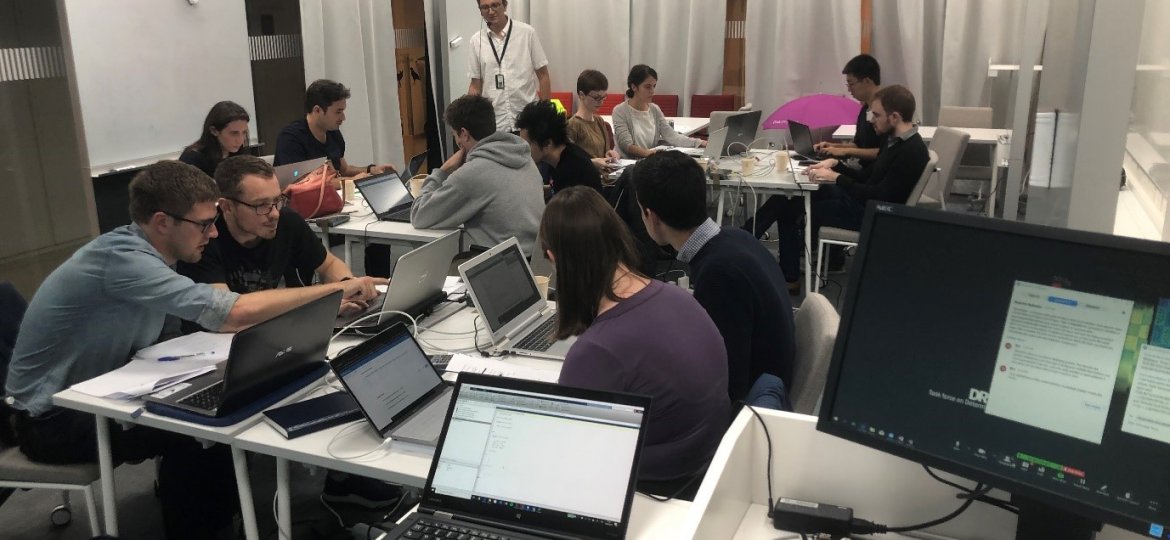
A one-week course on “Deterministic modelling of reactor systems” took place at Chalmers University of Technology, in Gothenburg (Sweden), from 9-13 September 2019. Gathering 11 in-person and 16 off-site participants, the course had special features, both content wise and pedagogy wise.
Content wise, the course covered the modelling aspects of nuclear systems, with emphasis on neutron transport, fluid dynamics and heat transfer. This course presented the main algorithms in the computer codes used by the industry and in academia for the macroscopic modelling of nuclear systems. The underlying methods used in such codes, together with their assumptions and limitations, were thoroughly presented.
Pedagogy wise, the course was offered in a hybrid learning environment: the course could be attended either on-site or off-site (i.e. remotely), while preserving full interaction possibilities between both audiences and between each audience and the teacher. This was made possible thanks to a special interactive teaching room earlier developed at Chalmers and allowing both audiences to share audio, video and digital contents. The course was also given as a “flipped” class, i.e. the actual lectures were delivered asynchronously as short recorded lectures or webcasts and complemented with web-based quizzes. The students had to follow such webcasts/quizzes prior to attending the synchronous sessions.
The main incentive in flipped classrooms is to get the students prepared to the synchronous sessions with the teachers, during which activities promoting higher-order thinking skills are arranged. The core of the active learning sessions was set up around the writing of various programming assignments in MATLAB Grader. The assignments aimed at developing a coupled neutronic/thermal-hydraulic model of a one-dimensional heterogeneous sodium-cooled reactor in steady-state conditions.
Most of the time of the synchronous sessions was spent on tight interactions between the teacher and students, who all had at the end of the week developed their own model of a sodium-cooled fast reactor.

